Continuing the conversation about coping permantns ask ourselves what do we do about cards that have two sets of characteristics? About flip cards, Morphs, double-faced cards or cards turned face down?
For such permanents it is important to know the object’s state which determines the copiable values.
707.3. The copy's copiable values become the copied information, as modified by the copy's status (see rule 110.5). Objects that copy the object will use the new copiable values.
Copying Face-down cards
— What is printed on a face-down card?
— The Magic card back.
— What are the copiable values of such a card?
— Those listed by the ability or rules that allowed the spell or permanent to be face down.
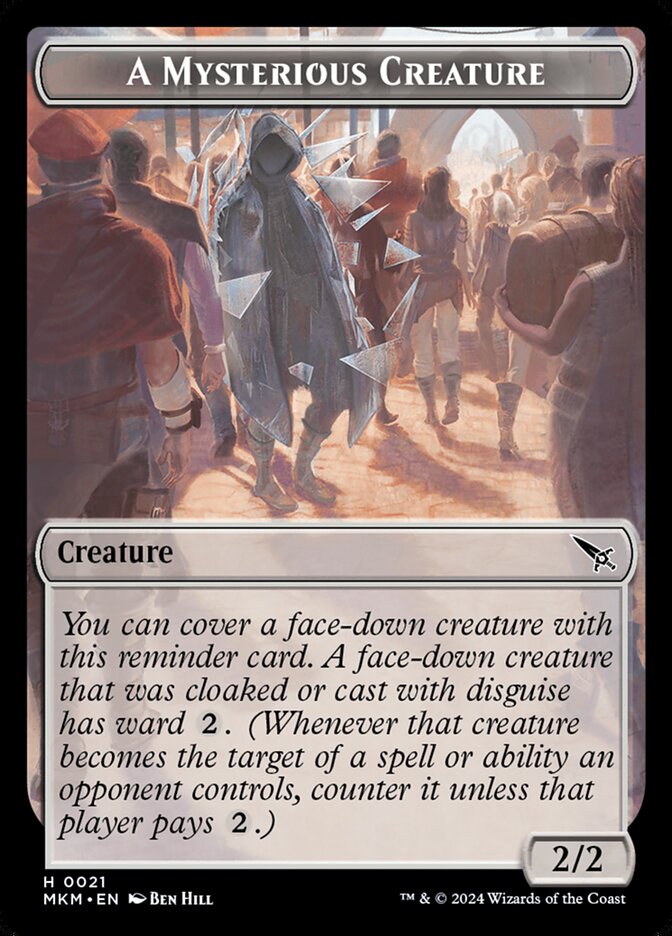
Face-down disguised or сloaked card has the exact same copiable values:
Name: none;
Mana cost: none;
Color: none;
Type: creature;
Supertype, subtype: none;
Rules text: ward {2};
Power: 2;
Toughness: 2.

The third ability of Tezzeret, Cruel Machinist makes unusual face down permanents.They’re 5/5 artifact creatures with no text, no name, no subtypes, and no mana cost.
If an effect turns the card face up, the effect causing it to be a 5/5 artifact creature ends:
708.8. As a face-down permanent is turned face up, its copiable values revert to its normal copiable values.
In fact, if we copy a face-down creature with Morph ability, nothing really changes. We still get the same “Faceless” — the game only sees copiable values of the copied creature in its current state. We shall not be able to pay the Morph cost to turn the copy face up, because the copy simply doesn’t have that ability and doesn’t know anything about it.
It’s an all different story if the copy is face down, while the original is (or at least was) a face-up creature with Morph.
(707.3.)
Example: A face-down Grinning Demon (a creature with morph) becomes a copy of a face-up Branchsnap Lorian (a 4/1 green creature with trample and morph G). The Demon’s characteristics become the characteristics of Branchsnap Lorian. However, since the creature is face down, it remains a 2/2 colorless creature with no name, types, or abilities, and no mana cost. It can be turned face up for G. If it’s turned face up, it will have the characteristics of Branchsnap Lorian.
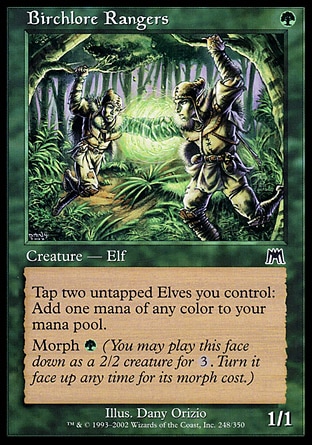
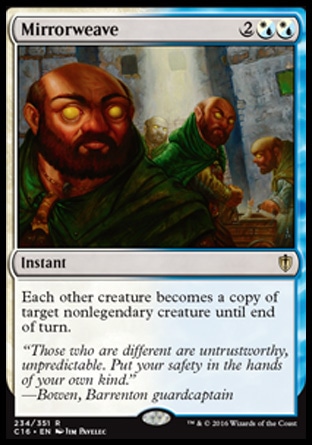
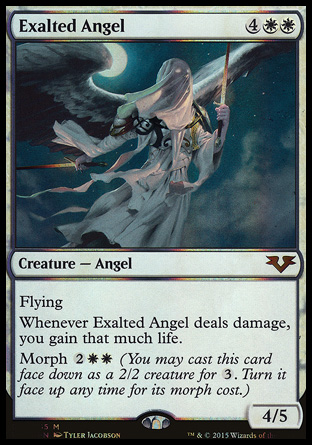
A face-down Birchlore Rangers becomes a copy of a regular-state Exalted Angel (for example, through Mirrorweave). What do we get? A face-down 2/2 creature without mana cost, color etc. Not what you expected, eh?
Let’s figure out why it is so. What are the Angel’s copiable values? Quite right, the ones printed on it. The copy will have that set of values, BUT! it will still be face down, because copying doesn’t change the state of the permanent. The copy’s controller will be able to perform the special action — turn the Morph face up by paying the angel’s Morph cost and get himself a full-fledged angel.
(707.3.)
Example: A face-down Grinning Demon (a creature with morph) becomes a copy of Wandering Ones (a 1/1 blue Spirit creature that doesn’t have morph). It will be a face-down Wandering Ones. It remains a 2/2 colorless creature with no name, types, or abilities, and no mana cost. Its controller can’t turn it face up as a special action. If an effect turns it face up, it will have the characteristics of Wandering Ones.
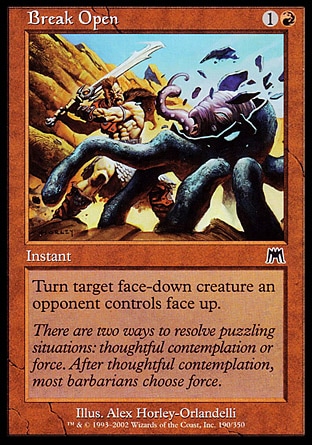
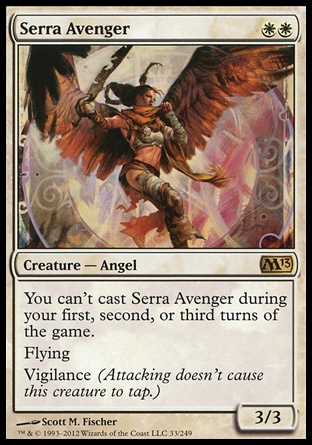
In case if the face-down Morph becomes a copy of a creature without the Morph ability (such as Serra Avenger), we get a 2/2 creature without mana cost etc., which doesn’t have the Morph ability. It cannot be turned face up normally, as there is no Morph cost, but if an effect turns it face up at some point (Break Open), we get the normal Serra Avenger.
Coping flip cards
”Flip, flap, twiddle, tap”
Time to look at another sort of “twisters”, namely flip cards from Kamigawa set.
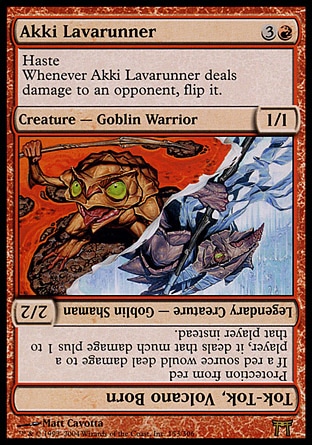
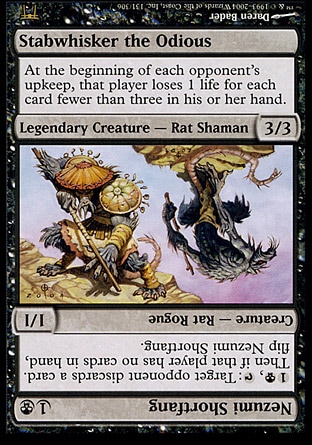
These cards have the same color and mana cost regardless of the state. But the name, type, subtype, supertype and rules text depend on whether the card is flipped or not.
707.3. The copy's copiable values become the copied information, as modified by the copy's status (see rule 110.5). Objects that copy the object will use the new copiable values.
Example: Tomoya the Revealer (a flipped flip card) becomes a copy of Nezumi Shortfang (an unflipped flip card). Tomoya’s characteristics become the characteristics of Stabwhisker the Odious, which is the flipped version of Nezumi Shortfang.
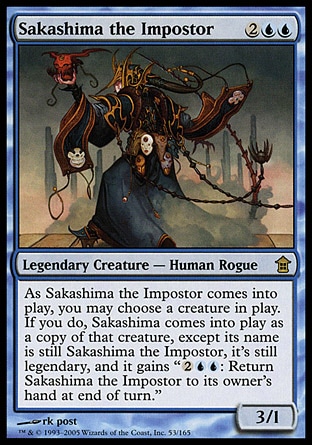
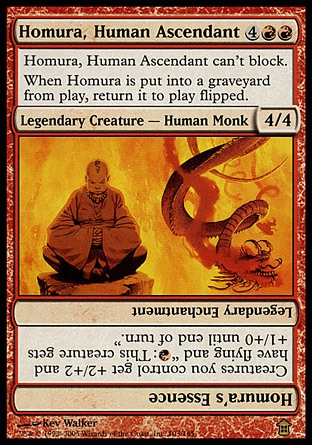
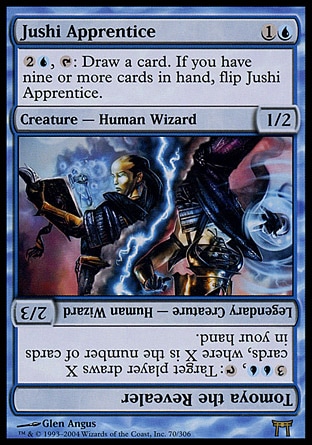
Sakashima the Impostor, being a copy of Homura, Human Ascendant, hits the graveyard. The trigger goes off, and returns it onto the battlefield flipped. If at the time it enters the battlefield we choose Jushi Apprentice to be copied, we get this creature as a result:
Sakashima the Impostor, {1U}, 2/3;
Legendary РЎreature — Human Wizard;
3UU, TAP: Target player draws X cards, where X is the number of cards in your hand.
{2UU}: Return Sakashima the Impostor to its owner’s hand at the beginning of the next end step.
Dimir Doppelganger becomes a copy of Budoka Gardener and flips using the Gardener’s ability. If Dimir Doppelganger becomes a copy of Wizened Cenn after that, it will preserve its state “flipped”, which will not affect the Cenn in any way. If it then becomes a copy of Bushi Tenderfoot at some point, it will have the copiable values of Kenzo the Hardhearted.

Copying two-faced card
Magic is facing the return of the double-faced cards in the upcoming Shadows over Innistrad block. They have the following special rule written for them:
707.8. When copying a melded permanent or other double-faced permanent, use the copiable values of the face that's currently up to determine the characteristics of the copy. See rule 712, "Double-Faced Cards."
707.8a. If an effect creates a token that is a copy of a transforming permanent or a transforming double-faced card not on the battlefield, the resulting token is a transforming token that has both a front face and a back face. The characteristics of each face are determined by the copiable values of the same face of the permanent it is a copy of, as modified by any other copy effects that apply to that permanent. If the token is a copy of a transforming permanent with its back face up, the token enters the battlefield with its back face up. This rule does not apply to tokens that are created with their own set of characteristics and enter the battlefield as a copy of a transforming permanent due to a replacement effect.
Example: Afflicted Deserter is the front face of a transforming double-faced card, and the name of its back face is Werewolf Ransacker. If an effect creates a token that is a copy of that transforming permanent, the token also has the same two faces and can transform. It enters the battlefield with the same face up as the permanent that it is a copy of.
Example: Clone is not a transforming double-faced card, so a token that is created as a copy of a Clone is not a transforming token, even if it enters the battlefield as a copy of a transforming permanent due to Clone's replacement effect.
712.8. Each face of a transforming or modal double-faced card has its own set of characteristics...
712.8a. While a double-faced card is outside the game or in a zone other than the battlefield or stack, it has only the characteristics of its front face.
712.8c. Normally, a transforming double-faced spell has its front face up while on the stack and has only the characteristics of its front face. However, if an effect allows a player to cast a transforming double-faced card "transformed" or "converted," the resulting spell will have its back face up and have only the characteristics of its back face. Its mana value is calculated using the mana cost of its front face.
712.8d. While a double-faced permanent has its front face up, it has only the characteristics of its front face.
712.8e. While a transforming double-faced permanent has its back face up, it has only the characteristics of its back face. However, its mana value is calculated using the mana cost of its front face. If a permanent is copying the back face of a transforming double-faced permanent (even if the object representing that copy is itself a double-faced permanent), the mana value of that permanent is 0. See rule 202.3b.
712.8f. While a modal double-faced spell is on the stack or a modal double-faced permanent is on the battlefield, it has only the characteristics of the face that's up.

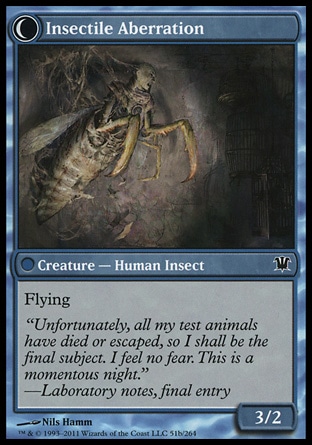
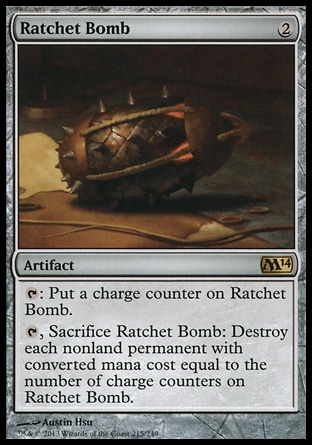
Mirage Mirror that is a copy of Insectile Aberration has no information about characteristics of Delver of Secrets.
If cunning opponent activates the second ability of Ratchet Bomb with one charge counter, as it resolves only the original Insectile Aberration will be destroyed since it has mana value=1 (as Delver of Secrets). The copy’s mana value=0.
712.9. Only transforming tokens and permanents represented by transforming double-faced cards can transform or convert. (See rule 701.28, "Transform," and rule 701.50, "Convert.") If a spell or ability instructs a player to transform or convert any permanent that isn't a transforming token or isn't represented by a transforming double-faced card, nothing happens.
Example: A Clone enters the battlefield as a copy of Wildblood Pack (the back face of a double-faced card). The Clone will be a copy of the Wildblood Pack. Because the Clone is itself not a double-faced card, it can’t transform.
Example: A player casts Citoshape, causing a Kruin Outlaw (the front face of a double-faced card) to become a copy of Elite Vanguard (a 2/1 Human Soldier creature) until end of turn. The player then casts Moonmist, which reads, in part, "Transform all Humans." Because the copy of Elite Vanguard is a double-faced card, it will transform. The resulting permanent will have its back face up, but it will still be a copy of Elite Vanguard that turn.
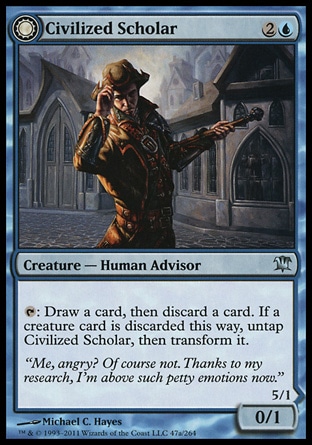
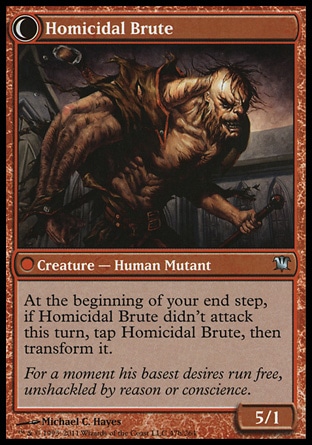
Phyrexian Metamorph enters the battlefield as a copy of Civilized Scholar with its front face up, it will know nothing about Homicidal Brute, and none of Homicidal Brute’s characteristics are copied. And since only cards that have two sides can transform, the Phyrexian Metamorph in the shape of Civilized Scholar cannot transform even if you discard a creature as its ability resolves.
If a double-faced card becomes a copy of something else, the new copiable values will replace its characteristics until the end of the copying effect, even if this double-faced card transforms. Ref. second example of 712.9.
When a double-faced card that is copying anything has to transform, it does so, since it physically has two faces, but its characteristics will still correspond to what it is copying, even if the copied object is itself one face of a double-faced card:
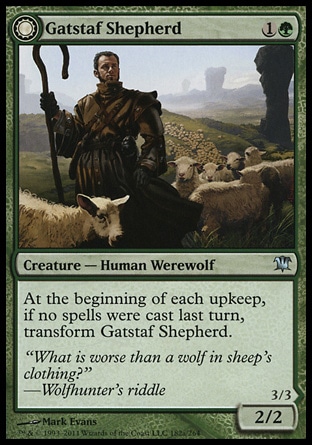

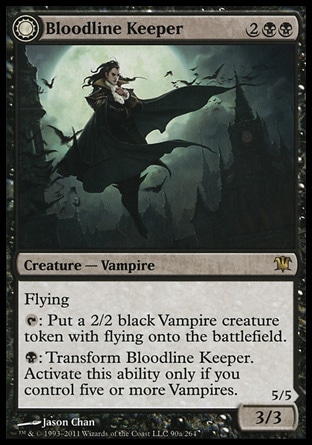
If you cast Mirrorweave targeting Bloodline Keeper, your Gatstaf Shepherd becomes a copy of it as it resolves. By activating Bloodline Keeper’s ability, the Shepherd will transform since it is a double-faced card, but you will still have a copy of Bloodline Keeper until end of turn. But when Mirrorweave’s effect ends, you will have Gatstaf Howler (the back face of Gatstaf Shepherd).
Coping Meld Cards
Meld cards are less intuitive than double-faced ones. Let’s read rules:
707.8. When copying a melded permanent or other double-faced permanent, use the copiable values of the face that's currently up to determine the characteristics of the copy. See rule 712, "Double-Faced Cards."
712.8b. A meld card on the stack has only the characteristics of its front face.
701.37c. If an effect instructs a player to meld objects that can't be melded, they stay in their current zone.
Example: A player owns and controls Midnight Scavengers and a token that’s a copy of Graf Rats. At the beginning of combat, both are exiled but can’t be melded. Midnight Scavengers remains exiled and the exiled token ceases to exist.
Just like double-faced cards, a copy of face-up meld card know nothing about other face and may not be melted.
712.8g. While the two cards of a meld pair are on the battlefield as a melded permanent, the object represented by those cards has only the characteristics of the combined back face, and its mana value is the sum of the mana values of its front faces. If a permanent is copying a melded permanent, the mana value of the copy is 0. See rule 202.3c.
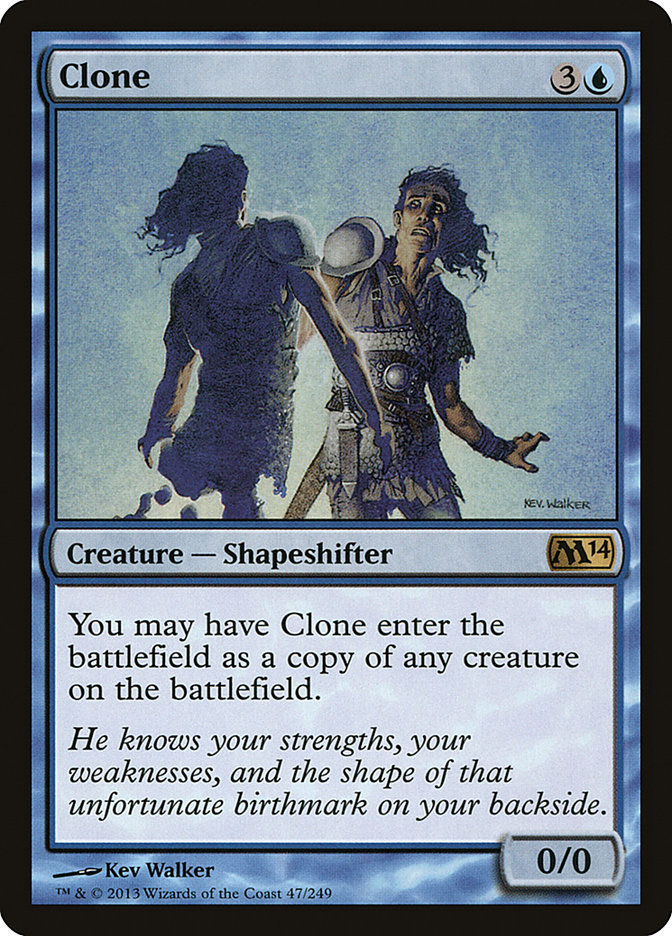
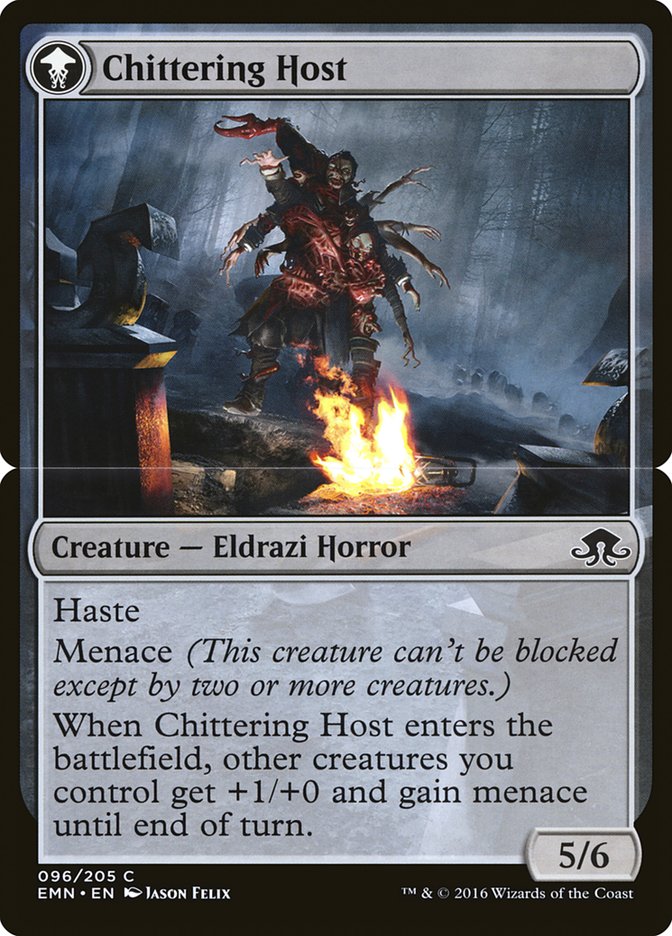
A Clone enters the battlefield as a copy of Chittering Host (the combined back face of a meld pair). It has the characteristics of Chittering Host, even though the object it becomes is represented by only a single card, and its convered mana cost is 0.
Homework
A player controls Essence of the Wild. Deathmist Raptor is manifested.That are the characteristics of this card? Mayit be turned face up and wich way?
A manifested card entering the battlefield will be a face-down copy of Essence of the Wild: 2/2 creature without mana cost, name, color, type and subtype. But it may be turned face up by paying {3GGG}. It may not be unmorthed by Megamorph ability.
Nighteyes the Desecrator (the second part of Nezumi Graverobber) hits the graveyard, a player pays on resolution of Cemetery Puca’s trigger. What does he get?
Puca isn’t a flipped card, so he gets Nezumi Graverobber with Puca’s ability to change its shape.
Will it retain this ability when the rat flips later on?
Thanks to Mirrorweave’s effect Bruna, the Fading Light becomes copy of Hanweir Garrison. Bruna’s controller activates the third ability of his Hanweir Battlements. What happens nex?
Both card are exiled. The end.
Translated by Witas Spasovski
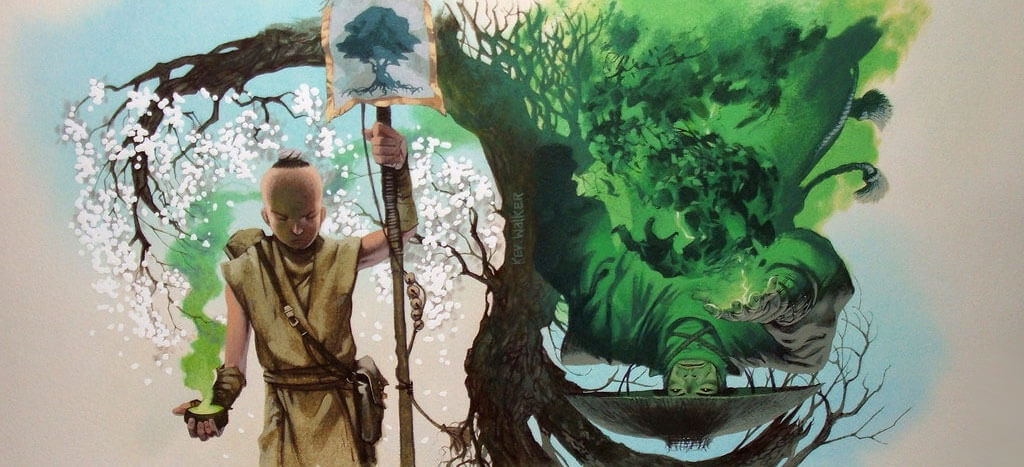
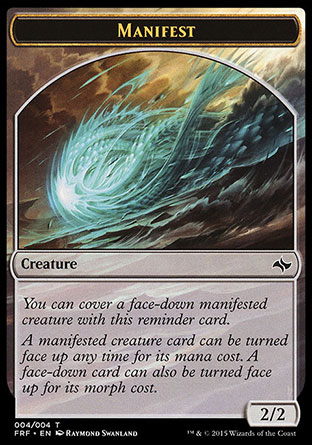
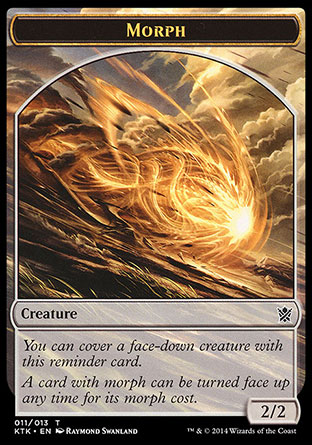
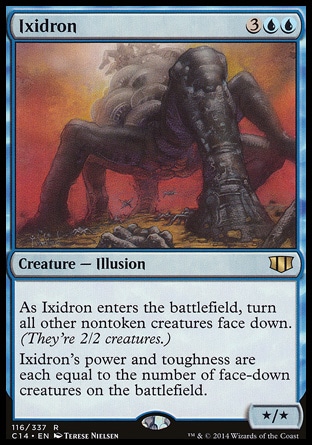
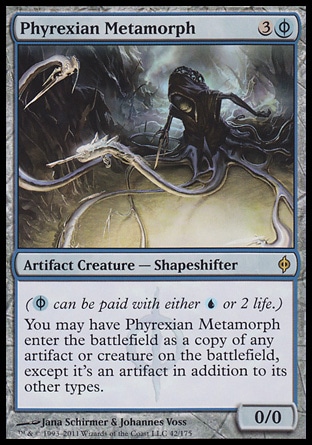
A manifested card, a face-down Morph and Tarmogoyf turned face down by Ixidron’s effect have the exact same copiable values: Name: none; Mana cost: none; Color: none; Type: creature; Supertype, subtype, rules text: none; Power: 2; Toughness: 2. You get the idea. Reminds me of the Faceless…